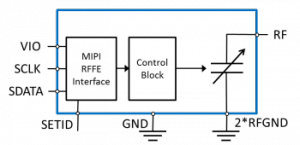
Cavendish antenna tuning – Devices with MIPI RFFE Interface
Thirteen years after it raised its first funding, Cavendish Kinetics, the RF MEMS antenna tuner specialist, has raised $7m.
The company’s first funding round was in 2001 when it raised $6.5m. In 2006, it raised $15.5m.
The company has changed its product plans along the way. Originally it set out to make a MEMS-based memory. Now it is making RF MEMS antenna tuners and it recently announced its first success with a design-in at ZTE.
Qualcomm Ventures participated in the new funding round, along with Tallwood Venture Capital, Wellington Partners and other existing investors.
The company describes its product as ‘a precise, reliable, lossless, small, variable capacitor for antenna tuning’.
The company’s thesis is that, by the time a signal gets to the chip-set for processing, it has been degraded by the antenna, the switch and the filter to 25% of its original strength, and 60% of that degradation is caused by the antenna.
Antenna size and LTE spectrum are critical elements to this. A small antenna means a drop in efficiency and, with LTE deployed in 40 different bands, the antenna has to cover a wider bandwidth.
Antennas have the best performance at the frequency for which they were designed. So you need to change the characteristics of the antenna to match the change in frequency.
The tuning is done with a MEMS capacitor: 32 capacitor stages pick the best settings to maximise antenna performance with ‘near zero’ loss.
Cavendish claims its technology doubles data rates and delivers up to 40% longer battery life with fewer dropped calls while avoiding the need to increase the size of the antenna.
david manners


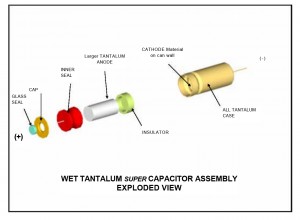
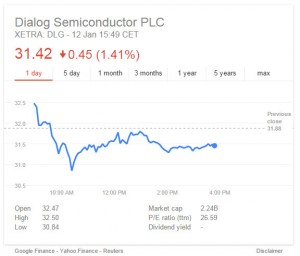
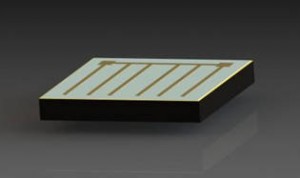 Plessey has entered a long-term commercial agreement with 8point3, a Dartford-based LED luminaire manufacturing company. Plessey will be supplying its GaN-on-Silicon MaGICTM LEDs for use in 8point3′s new Sabre Architectural range of LED linear lighting products.
Plessey has entered a long-term commercial agreement with 8point3, a Dartford-based LED luminaire manufacturing company. Plessey will be supplying its GaN-on-Silicon MaGICTM LEDs for use in 8point3′s new Sabre Architectural range of LED linear lighting products. Imec subsidiary Holst Centre with the Dutch research institute TNO, and games manufacturer Cartamundi are co-developing ultra-thin flexible NFC tags using metal-oxide (IGZO) thin-film transistor (TFT) technology on plastic film. The flexible chips will be integrated into game cards as a part of Cartamundi’s larger strategy of developing game cards for the connected generation
Imec subsidiary Holst Centre with the Dutch research institute TNO, and games manufacturer Cartamundi are co-developing ultra-thin flexible NFC tags using metal-oxide (IGZO) thin-film transistor (TFT) technology on plastic film. The flexible chips will be integrated into game cards as a part of Cartamundi’s larger strategy of developing game cards for the connected generation Auto is the fastest growing IC market, reports IC Insights, with a CAGR of 10.8% between 2013 and 2018.
Auto is the fastest growing IC market, reports IC Insights, with a CAGR of 10.8% between 2013 and 2018.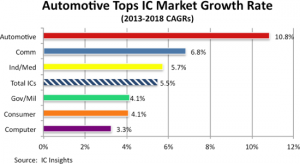 The total automotive IC market is expected to grow 15% to $21.7 billion in 2014, compared to a 1% increase registered in 2013.
The total automotive IC market is expected to grow 15% to $21.7 billion in 2014, compared to a 1% increase registered in 2013. The Gordon and Betty Moore Foundation has set up a $60mn programme for data-driven discovery research which seeks to find ways to make sense of the vast amounts of data which are being routinely collected.
The Gordon and Betty Moore Foundation has set up a $60mn programme for data-driven discovery research which seeks to find ways to make sense of the vast amounts of data which are being routinely collected.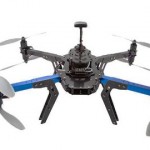 Drones need legislation, the House of Lords Internal Market, Infrastructure and Employment Committee was told by chief inspector Nick Aldworth of the Metropolitan Police yesterday.
Drones need legislation, the House of Lords Internal Market, Infrastructure and Employment Committee was told by chief inspector Nick Aldworth of the Metropolitan Police yesterday.